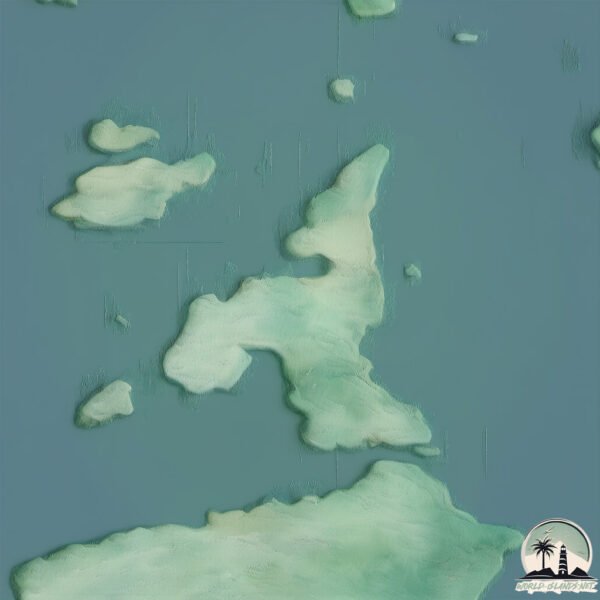Welcome to Lunga , a Temperate island in the Inner Seas off the West Coast of Scotland, part of the majestic Atlantic Ocean. This guide offers a comprehensive overview of what makes Lunga unique – from its geography and climate to its population, infrastructure, and beyond. Dive into the details:
Geography and size of Lunga
Size: 2.902 km²Coastline: 12.1 kmOcean: Atlantic OceanSea: Inner Seas off the West Coast of ScotlandContinent: Europe
Lunga is a Small Island spanning 2.9 km² with a coastline of 12.1 km.
Archipel: British Isles – A group of islands off the northwest coast of mainland Europe, including Great Britain, Ireland, and over 6,000 smaller islands, known for their rich history and cultural diversity.
Tectonic Plate: Eurasia – One of the world’s largest tectonic plates, the Eurasian Plate covers a significant portion of Europe and Asia. It’s characterized by diverse geological features, including the Ural Mountains, the European Plain, and the Himalayas formed from its collision with the Indian Plate.
The geographic heart of the island is pinpointed at these coordinates:
Climate and weather of Lunga
Climate Zone: TemperateClimate Details: Temperate Oceanic ClimateTemperature: Warm Summer
Climate Characteristics: Known for its moderate year-round temperatures with ample rainfall and no dry season. Warm summers are characteristic.
Topography and nature of Lunga
Timezone: UTC±00:00Timezone places: Europe/LondonMax. Elevation: 26 m Mean Elevation: 12 mVegetation: Evergreen Needleleaf ForestTree Coverage: 92%
The mean elevation is 12 m. The highest elevation on the island reaches approximately 26 meters above sea level. The island is characterized by Plains: Flat, low-lying lands characterized by a maximum elevation of up to 200 meters. On islands, plains are typically coastal lowlands or central flat areas.
Dominating Vegetation: Evergreen Needleleaf Forest
Vegetation: 4 vegetation zones – Diverse Island
Infrastructure and Travelling to Lunga
Does the island have a public airport? no .
Does the island have a major port? no .
The mean population of Lunga is 0 per km². Lunga is Uninhabited. The island belongs to United Kingdom .
The name of the island resonates across different cultures and languages. Here is how it is known around the world: Arabic: بريطانيا العظمى; German: Großbritannien; Spanish: Gran Bretaña; French: Grande-Bretagne; Portuguese: Grã-Bretanha; Russian: Великобритания; Chinese: 大不列顛島
Continuing your journey, Scarba is the next notable island, situated merely km away.
How to Photograph Puffins on the Isle of Lunga
Welcome to my exciting adventure on the enchanting Isle of Lunga, home to one of the most mesmerising seabird colonies in the ...
How to Photograph Puffins on the Isle of Lunga
Welcome to my exciting adventure on the enchanting Isle of Lunga, home ...
Welcome to my exciting adventure on the enchanting Isle of Lunga, home to one of the most mesmerising seabird colonies in the ...
Puffins Don't Get Closer Than This! A Remarkable Boat Trip to The Scottish Isles (Staffa and Lunga)
If you fancy getting up close to unique caves and incredible wildlife, ...
If you fancy getting up close to unique caves and incredible wildlife, I cannot think of a more perfect tour - welcome to our day ...
Puffins on Lunga Island Scotland
United Kingdom is classified as Developed region: G7: Group of Seven – Major advanced economies, including Canada, France, Germany, Italy, Japan, the United Kingdom, and the United States. The level of income is High income: OECD.
News – Latest Updates and Headlines from Lunga
Stay informed with the most recent news and important headlines from Lunga. Here’s a roundup of the latest developments.
Loading...
Please note: The data used here has been primarily extracted from satellite readings. Deviations from exact values may occur, particularly regarding the height of elevations and population density. Land area and coastline measurements refer to average values at mean high tide.

